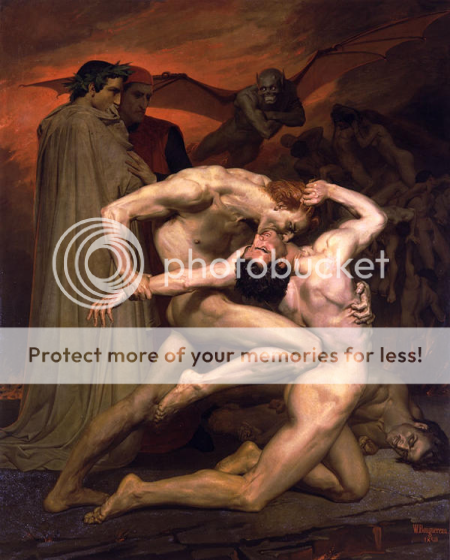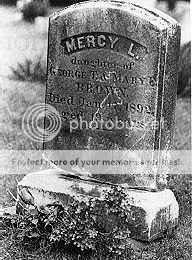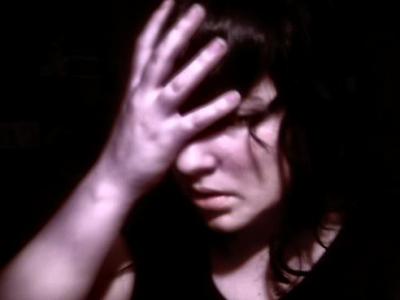The Vampire Part I10:50 Sep 21 2007
Times Read: 1,114
Vampires: Obsession #3

'If ever there was in the world a warranted and proven
history it is that of vampires.'
Jean-Jacques Rousseau (1712-1788)
I've always been interested in Vampires, though i think most people are in one way or another. I couldn't tell you where it started for me, a memory that sparked the obsession, a movie or a book.
Everything about the Vampire intrigues me, from the physicality, the abhorence, the lore, the murders. To Vampire art, literature and media.
The fact and fiction, the different accounts, peoples views of them. Their evolution, their history their sexuality and romance, their brutality and vengeance. How they have gripped and mesmerised people of all races throughout time.
So here i will let my obsession boil over, and write down whatever it is that intrigues me at the time of writing it. To have a little bit of everything about the vampire written down, from their history, folklore and witness accounts. To the Vampire in religion, science, literature, media and art. Also the modern day vampire killers, serial killers, murderers et al. And anything else that strikes my fancy!

Vampire myths go back thousands of years and occur in almost every culture. The myths differ in every part of the world as does the description and name. From red eyed monsters with green or pink hair in China to the Greek Lamia which has the upper body of a woman and the lower body of a winged serpent, from vampire foxes in Japan to a head with trailing entrails known as the Penanggalang in Malaysia. But the vampire we know today although tainted and mutated by movies and fiction is largely Eastern European.
Many things we associate with the Vampire today are relatively new concepts, such as the romanticism, as well as the long black capes and tall collars and the tranforming into bats. But we still retain some of the details from the Eastern European mythos such as blood drinking, returning from the dead, prowling at night preying upon the living etc.
But the details such as placing poppy seeds at the corner of the grave to keep the vampire occupied counting seeds all night (as seen in an episode of The X-Files:) instead of killing relatives has all but vanished from modern day myth.
Even among the European myths there are a variety of vampires, which can be seen in movies, the difference in appearance, different ways of being killed even different names.

Strigoi
ROMANIAN VAMPIRES AND MYTHS
In Romania the Vampire is called Strigoi based on the Roman term strix for screech owl which also came to mean demon or witch.
There are different types of strigoi: strigoi vii are live witches who will become vampires after death. They can send out their soul at night to meet with other witches or with Strigoi mort who are dead vampires. The strigoi mort are the reanimated bodies which return to suck the blood of family, livestock, and neighbours.
The Vircolac which is sometimes mentioned in folklore was more closely related to a mythological wolf that could devour the sun and moon and later became connected with werewolves rather than vampires. The person afflicted with lycanthropy could turn into a dog, pig, or wolf.
The vampire was usually first noticed when it attacked family and livestock, or threw things around in the house. Vampires, along with witches, were believed to be most active on the Eve of St George's Day (April 22 - I was born on St. Georges day!), the night when all forms of evil were supposed to be abroad. St Georges Day is still celebrated in Europe.
A vampire in the grave could be told by holes in the earth, an undecomposed corpse with a red face, or having one foot in the corner of the coffin. Living vampires were found by distributing garlic in church and seeing who didn't eat it.
Graves were often opened three years after death of a child, five years after the death of a young person, or seven years after the death of an adult to check for vampirism.
To destroy a vampire, a stake was driven through the body followed by decapitation and placing garlic in the mouth. By the 19th century people were shooting a bullet through the coffin. For resistant cases, the body was dismembered and the pieces burned, mixed with water, and given to family members as a cure.
 The Mercy Brown Vampire Incident.
The Mercy Brown Vampire Incident.
One of the most well documented events of where a corpse is dug up to perform rituals.
In 1892, when tuberculosis, at the time called consumption, wasn't understood and was subject to urban myth. Several members of the Brown family who lived at Rhode Island contracted the disease. The mother and eldest daughter both died from tuberculosis and left the Brown son Edwin ill.
Three years later in 1891 another daughter, Mercy also died from the disease. People believed that one of the dead family members was a Vampire and was keeping Edwin ill.
So they dug up the bodies of the mother and the first daughter to find both in late stages of decomposition. They then dug up the grave of Mercy 2 months dead to find that she had not started decomposing, and that there was blood still in the heart, they believed that this meant she was undead and the cause of Edwins condition.
Mercy's heart was removed from her body, burnt, and the remnants mixed with water and given to the sick Edwin to drink. Shockingly... this didn't relieve Edwin of the sickness and he died two months later.
 The first recorded documentation of the Vampire was in 1047AD. A Priest writing about Novgorodian Prince Vladimir Yaroslavovich writes that his name is "Upir' Likhyi " (Упирь Лихый), which would mean something like "Wicked Vampire" or "Foul Vampire."
Catalepsy
The first recorded documentation of the Vampire was in 1047AD. A Priest writing about Novgorodian Prince Vladimir Yaroslavovich writes that his name is "Upir' Likhyi " (Упирь Лихый), which would mean something like "Wicked Vampire" or "Foul Vampire."
Catalepsy
Catalepsy is a disorder of the nervous system that causes a form of suspended animation. It causes a loss of voluntary motion, a rigidity to the muscles, as well as decreased sensitivity to pain and heat. A person suffering from catalepsy can see and hear cannot move. Their breathing, pulse, and other regulatory functions are slowed to the extent that to an untrained eye, it would seem as though they were deceased. This condidtion can last from minutes to days. Before 20th century medicine came along, there were few diagnostic tests that could be done on a body to ensure it was in fact dead, and so it is possible and even likely that persons suffering from catalepsy could have been declared dead prematurely. Embalming a corpse before burial is also a 20th century idea, so it's very possible that these bodies were declared dead and buried while the person still lived. Upon recovering from their catalyptic state, the person would try to dig their way to the surface. Many myths may have arisen from this single condition alone.
Sources: http://en.wikipedia.org
http://www.chebucto.ns.ca/~vampire/vhist.html






















































































COMMENTS
-